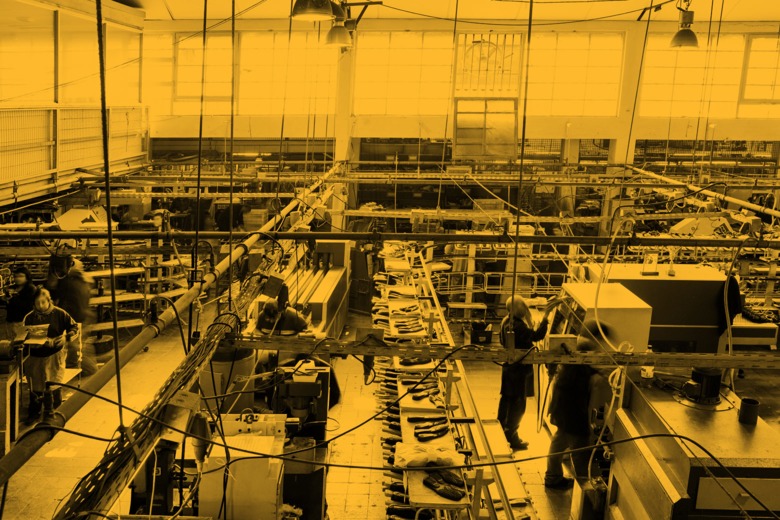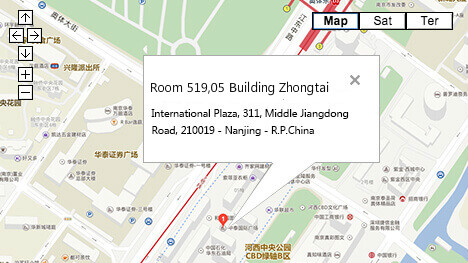Pins recall alert published by the United States Consumer Product Safety Commission ( CPSC) and…
Why Factories Aren’t Tourist Attractions Anymore
By HENRY GRABAR APRIL 03, 2018
For a long time, American factories were symbols of technology and modernity. They symbolize something very different now.

East of Bayou Teche, where the Gulf of Mexico laps away at the arch in Louisiana’s boot, sits a clump of high ground called Avery Island. Here in the pepper fields a factory churns out one of America’s most famous exports, a brand so iconic it has, like Kleenex, become synonymous with the product itself: Tabasco. For $5.50, you can tour the factory—toddlers enter free!—and come away with miniature Tabasco bottles.
The experience feels stuck in time. Nearly everything we consume is made in a factory, but the offer of a tour assumes a degree of producer openness and consumer interest that neither side has, any longer, in great supply. This wasn’t always the case: In 1962, a Commerce Department list of U.S. plant tours included 35 industrial tours in Milwaukee alone, from the brewery to the funeral home. Henry Ford’s Highland Park factory was built with extra smokestacks to accommodate the company name in giant letters—evidence that, despite all the strife of industrial production, workers, consumers, and managers shared a sense that what happened in the factory was ingenious, remarkable, and worthy of an audience.
Joshua Freeman’s book Behemoth: A History of the Factory and the Making of the Modern World is in part a story of factory tourists, famous and anonymous, and the displays that lured them, including extraordinary one-off exhibits like the Chevrolet assembly line on view at the 1933 Chicago World’s Fair. This relationship was predicated on a shared assumption that great factories represented the cutting edge of both technology and social relations. That is no longer true, and Freeman’s immersive, trivia-packed history explains what happened.
As the title implies, the book is specifically a history of the world’s largest factories, or what Freeman calls “industrial gigantism.” But like all good building studies, the book uses structures from early English cotton mills to Foxconn’s Longhua plant to trace the evolution of technology, labor relations, and global markets—300 years of world history in little more than 300 pages.
Freeman is a labor historian, and factory society is familiar ground. In addition to outlining the forces that encouraged early manufacturing to be concentrated in megastructures—such as limited transportation networks, isolated power sources, economies of scale, quality and production control, and the protection of trade secrets—Freeman devotes much of the book to the giant factory’s socializing role. In industrial England, for example, the factory job was often the first reason anyone ever had to know the time. Time-discipline was one reason local men shunned factory work as emasculating; it also introduced secondary jobs such as the “knocker up,” whose job it was to wake urban workers too poor to own clocks or watches. (Freeman posits the position—a stock role for bedroom comedy in English music halls—is at the origins of the expression “knocked up.”) The job persisted into the 20th century, when, in a different overcrowded city neighborhood, it was the first gig of future New York City Mayor Abe Beame.
Factories have always been paternalistic employers. Company stores and housing cut into worker pay and consolidated corporate control, enabling early New England mill towns to establish curfews and require church attendance from their (mostly young, unmarried, female) employees. Henry Ford would establish a “sociological department” to foment good behavior as his factories assumed many civic functions, such as libraries, health clinics, and recreational facilities. In the USSR and Eastern Europe these trends were more pronounced, as factories continued to be viewed as a civilizing force into the late 20th century.
No Bangladeshi garment factories are splashed on postcards, as Ford’s Highland Park once was.
The book’s parade of names and places can be overwhelming, as the narrative moves from cotton to steel to cars to electronics. And yet the focus on megafactories keeps things tight. Their world is surprisingly small, with each one influenced by the last. (American manufacturers, for example, were heavily involved in the Soviet Union’s early industrialization.) Freeman has an eye for the anecdotes that tie factory policy to everyday life, noting, for example, that Ford’s quest for vertical integration (controlling all stages of the supply chain) led to a massive stockpile of sawdust at his Michigan lumber mills, which became Kingsford barbecue charcoal. One reason American streets looked so elegant and neat in the early years of the auto age was because every car was black—a Ford strategy to simplify the production line.
The flipside of consolidating so much labor in one place has always been that “large assemblages of workers who work together, live together, pray together, drink together, and die together can turn the largest, most important factories from models of efficiency into weapons of labor power.” There, Freeman is writing about Nowa Huta, the Polish factory town that served as a crucible for the Solidarity movement. But it was also true in the United States, where industrial concentration helped empower workers in rapid bursts of unionization. Small, wildcat strikes could halt entire production lines. American corporations steered away from big plants after World War II, Freeman argues, because they were so vulnerable to union activism. Between 1947 and 1967, otherwise a period of breakneck economic growth in the U.S., the number of large factories grew by only 7 percent.
Article Source: https://slate.com/culture/2018/04/behemoth-by-joshua-freeman-reviewed.html


This Post Has 0 Comments